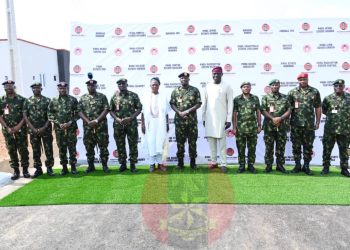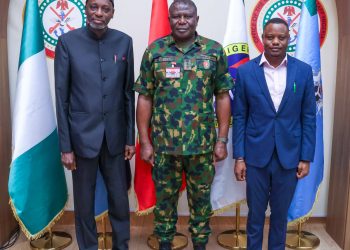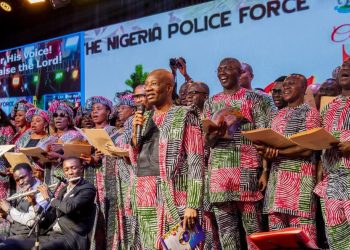By Nkechi Eze
The Chief of the Air Staff (CAS), Air Marshal Hasan Bala Abubakar, has restated the Nigerian Air Force’s (NAF) unwavering commitment to enhancing operational readiness by prioritizing aircraft serviceability through a strengthened maintenance culture, sweeping institutional reforms, and carefully cultivated strategic partnerships. He gave this assurance while declaring open the 2025 Aircraft Engineering Conference held on Wednesday, 16 July, at NAF Headquarters, Abuja.
In a statement signed by the Director of Public Relations and Information, Air Commodore Ehimen Ejodame, the CAS emphasized that in modern warfare, “mission success in contemporary air operations is directly tied to the availability, airworthiness, and sustained performance of aircraft platforms,” reaffirming the central role of engineering excellence in the NAF’s ongoing transformation drive.
The two-day conference, themed “Enhancing Aircraft Serviceability in the NAF through Strong Maintenance Culture and Strategic Partnerships,” convened a wide array of serving and retired aviation engineering professionals to deliberate on practical solutions to aircraft maintenance challenges and chart a forward-looking roadmap to sustain fleet readiness. The CAS described the forum as “timely and transformative,” particularly in view of the Nigerian Air Force’s expanding aircraft inventory and growing demand for rapid-response technical support.
Air Marshal Abubakar disclosed that the NAF had inducted 15 new aircraft in the last two years, with an additional 49 advanced platforms expected by the end of 2026. Against this backdrop, he announced a bold serviceability target of 90 percent by the fourth quarter of 2025. The NAF, he said, currently maintains a 72 percent average fleet serviceability rate, an outcome driven by sustained investment in the development of technical manpower, procurement of critical spare parts, deployment of modern ground support equipment, and the adoption of predictive maintenance technologies.
“Each of these high-tech platforms demands sophisticated, data-driven maintenance to remain mission-ready,” he noted, while also pointing to the recent adoption of digital documentation protocols as a major innovation that is already improving maintenance accuracy and accountability across the Service.
One of the landmark moments of the opening day was the official creation of the Directorate of Aircraft Life Cycle Management (DALCM) a new strategic organ established to ensure comprehensive oversight of each aircraft from induction to retirement. According to the Air Chief, the new directorate will guarantee that every aircraft acquisition is backed by a structured and long-term sustainment plan, in line with evolving mission profiles. The establishment of DALCM marks a significant shift toward proactive lifecycle management and reinforces the NAF’s growing emphasis on self-reliance in aircraft sustainment.
Welcoming participants earlier, the Chief of Aircraft Engineering (CACE), Air Vice Marshal AI Amodu, expressed his deep gratitude to the CAS for his consistent support to the engineering branch. He underlined the centrality of technical personnel to NAF operations, describing them as “the backbone of the Force, the ones who keep the wheels turning.” He charged conference participants to take ownership of the NAF’s engineering transformation journey and commit fully to the process of innovation and continuous improvement.
The day also featured two technical paper presentations by leading aviation experts. Air Vice Marshal J. Laoye spoke on “Technical Documentation in the NAF: A Prerequisite for Strong Maintenance Culture,” while AVM M.A. Yakubu (Rtd) delivered a paper titled “Aircraft Maintenance and Operational Effectiveness: Leveraging Local and Foreign Partners.” Both sessions generated dynamic and solution-focused discussions around enhancing fleet reliability, deepening partnerships, and institutionalizing engineering excellence within the Air Force.
As the conference continues into its second day with more expert panels and paper presentations, the NAF appears firmly positioned to advance its long-term goal of building a smarter, more technologically advanced, and combat-ready force. The event not only underscored the Service’s strategic focus on engineering reform but also reinforced its alignment with national security objectives and Nigeria’s broader aerospace ambitions.
















